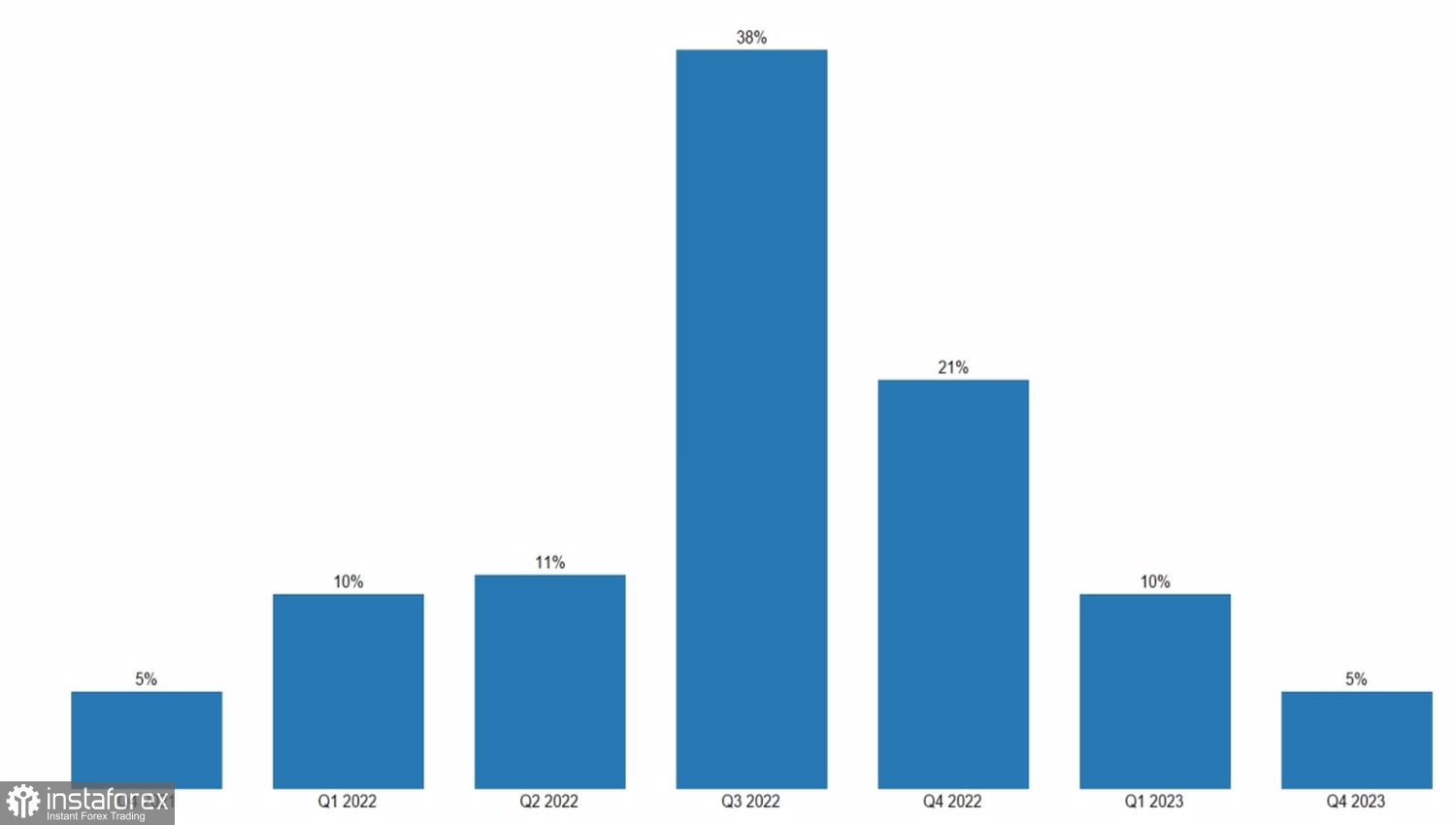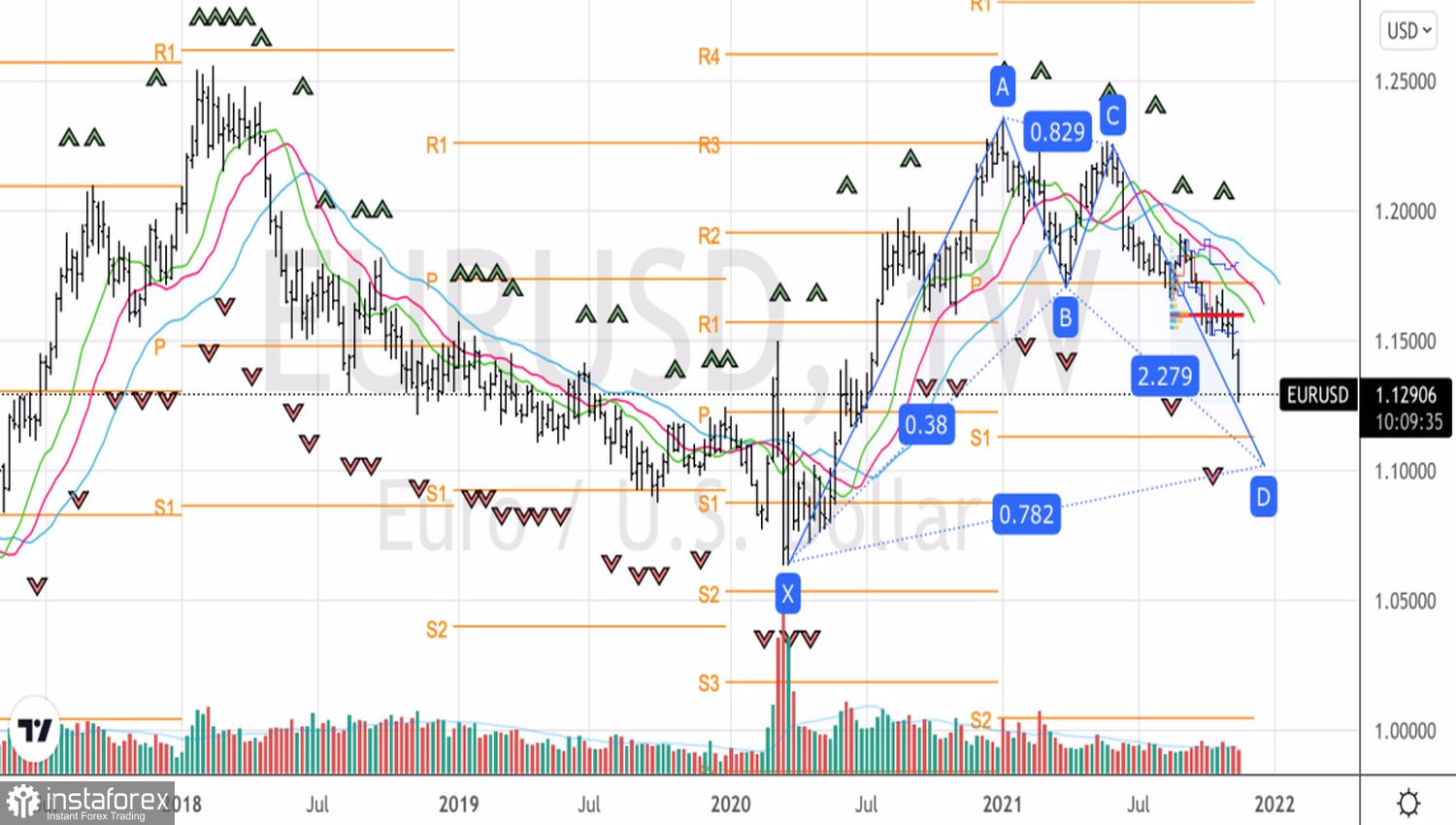While Christine Lagarde argues before the European Parliament that the tightening of the ECB's monetary policy will do more harm to the eurozone economy than good, the Fed's "doves" cautiously suggest that an increase in the federal funds rate in 2022 may be necessary. This opinion was reached by the president of the Federal Reserve Bank of Chicago, Charles Evans, saying that the increase in borrowing costs could become a reality if everything does not go according to the Fed's plan. While the plan is bursting at the seams.
The acceleration of U.S. consumer prices to 6.2% YoY and retail sales to 1.7% MoM convince of two things. The U.S. economy looks very strong and is likely to accelerate by 3.8%-4% in the fourth quarter. Inflation does not even think to dance to the tune of the Fed. The growth in wages, rental costs, and the expansion of the list of goods and services that are experiencing increased price pressure indicate that there is no need to expect a slowdown in CPI and PCE until the second half of 2022. And then, the labor market will recover, pushing the Fed to raise the rate.
And although Reuters experts predict that the first act of monetary restriction will take place only in the fourth quarter of next year, most of them believe that it would be better if it happened in September. Atlanta Federal Reserve President Raphael Bostic sets an even earlier date - mid-2022. Bank of America agrees with him and does not rule out that a double blow from wages and inflation could push the central bank to an earlier start of the process of tightening monetary policy. No matter how the Fed starts raising rates in the spring.
Forecasts for the timing of the Fed rate hike

When one bank raises rates, and the second keeps them at the same level, it is clear where the money flows. From Europe to North America. Expectations of the Fed's monetary restriction lead to an increase in the yield of U.S. Treasury bonds, increase their attractiveness, and fuel demand from non-residents, including for the U.S. currency. Moreover, the shares look very presentable. It's not for nothing that the S&P 500 managed to mark 66th record close in 2021 – the best result since the early 1960s.
There is nothing to answer the "bulls" on EURUSD and from the point of view of the economy. Unlike the United States, whose GDP is likely to accelerate in the fourth quarter, the eurozone is experiencing difficulties due to the energy crisis, the resurfacing of the Brexit issue, and the next wave of COVID-19.
The key events of the week by November 26 will be the releases of data on European business activity and U.S. inflation. Bloomberg experts expect a slowdown in purchasing managers' indices in the manufacturing and services sectors of the currency bloc and an acceleration in the personal consumption expenditures index, the Fed's preferred inflation indicator. If this happens, the main currency pair will continue to seek its fortunes on the downside.
Technically, a Gartley pattern has formed on the EURUSD weekly chart. Its target of 78.6% corresponds to the 1.1 mark. This indicates that the potential of the downward movement of the main currency pair is far from being exhausted and allows you to adhere to the previous strategy of selling on growth.
EURUSD, Daily chart

 English
English 
 Русский
Русский Bahasa Indonesia
Bahasa Indonesia Bahasa Malay
Bahasa Malay ไทย
ไทย Español
Español Deutsch
Deutsch Български
Български Français
Français Tiếng Việt
Tiếng Việt 中文
中文 বাংলা
বাংলা हिन्दी
हिन्दी Čeština
Čeština Українська
Українська Română
Română

